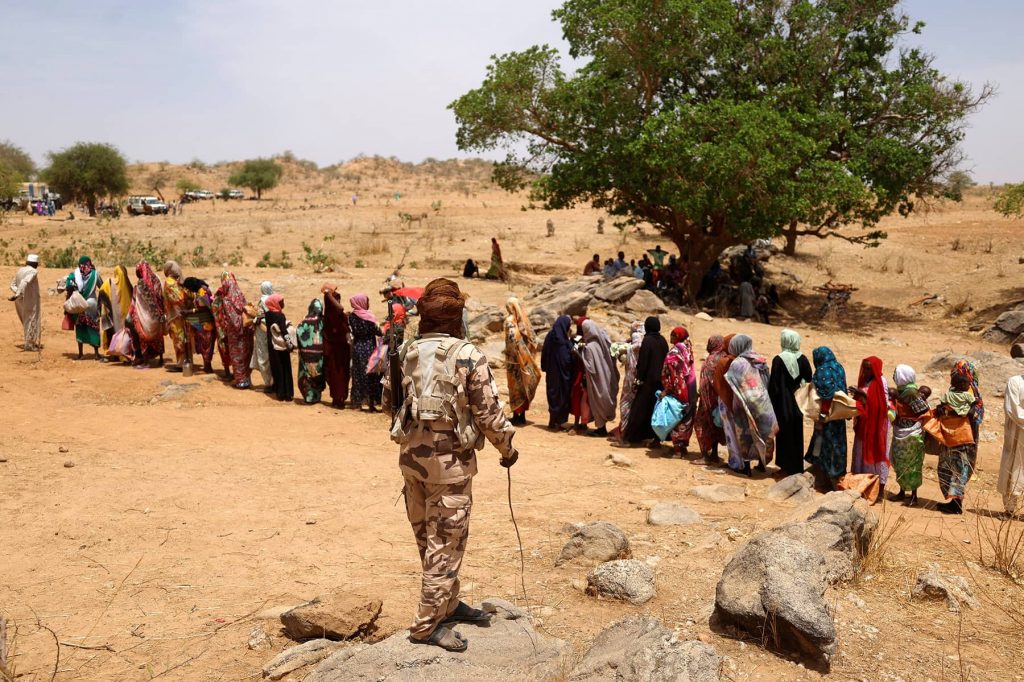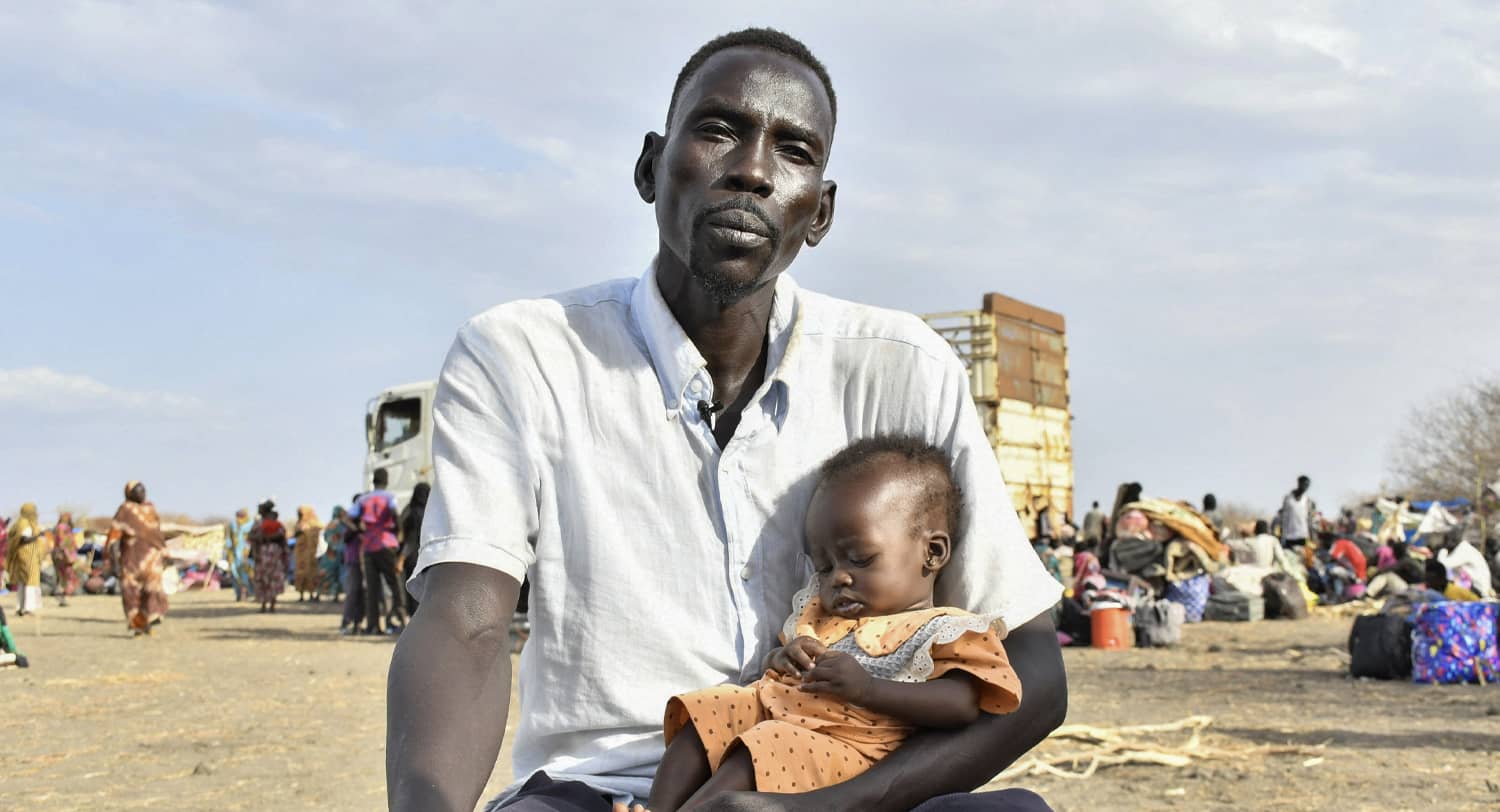The Republic of Sudan was born in war when it became independent in 1956. Since April of this year, the country is once again engulfed in a war that has ethnic, regional and institutional dimensions and that can once again result in a regime that exports instability and harbors terrorism.
Sudan has been here before. Even before achieving independence in 1956, Sudan’s largely Christian and animist south had revolted against the authorities in Khartoum, in what would be the initial phases of the First Sudanese Civil War (1955-1972). This would be succeeded by the even bloodier and more brutal Second Sudanese Civil War (1983-2005) whose logical conclusion would be the independence of South Sudan in 2011. Both wars had ethnic (African vs. Arab) and religious (Christian vs. Muslim) dimensions.
But Sudan’s violent reality has been not only about tensions among religious and ethnic communities but also about conflict between the center and peripheries, particularly the disparities in wealth and power between Khartoum and the Nile Valley and the marginalized regions like Darfur in the west. The war in Darfur began exactly twenty years ago as non-Arab tribal groups fought Khartoum government forces and their local proxies in a conflict involving politics, squabbles over land and water, and ethnic grievances. As with the war of the north against the south, the human cost of the Darfur conflict was high in deaths, displacement and destruction.
Sudan’s latest war began on April 15, 2023 and continues. It is being waged inside the capital city of Khartoum, population of around 6 million. Though brief conflict reaching Khartoum had occurred between rebels and regime in 1976 and 2008, this inner city fighting is unprecedented. According to the International Organization for Migration, 1.3 million Sudanese have been displaced in the first 40 days of the war. The country already faced poverty and food scarcity before the conflict. Now instead of a third of the population needing emergency assistance, the number is about half of the country’s 47 million people.
Even if the war ended today, the cost to rebuild or replace what was lost will be in the billions of dollars. Although the conflict in Khartoum draws the most attention, bitter fighting has destroyed the center of several of Darfur’s cities. The capitals of the states of West Darfur and Central Darfur, El Geneina and Zalingei, have been devastated with 80,000 people, mostly women and children, fleeing into Chad. In both Darfur and Khartoum, warehouses, markets and factories have been looted or burned to the ground. Khartoum, center of most of the country’s production, saw the destruction of Sudan’s largest manufacturer of baby food. Hospitals have also been hard hit. If not looted or bombed, some doctors have been reduced to operating by the light of their cellphones with whatever materials or medicines are at hand. The fighting is between two government factions, two armies backed by ethnic groups and driven by personal and institutional ambition. The Sudanese Armed Forces or SAF is the country’s regular armed forces, from whose ranks the country’s dictators have emerged, primarily northern Arabs. Sudan’s longtime Islamist dictator Omar al-Bashir (overthrown in 2019) began as a SAF General. He distrusted it, repeatedly purging it of unreliable elements, but allowed it great economic privileges that survived his fall.
Opposing SAF are the Rapid Support Forces (RSF), paramilitary shock troops led by Darfuri Arabs which are the outgrowth of Khartoum’s and SAF’s counterinsurgency policies fighting wars in the south and Darfur. Since at least the 1980s, Khartoum has used tribal militias, in conjunction with SAF and other formations, to fight their enemies in the far-flung region. The government armed certain loyal tribes to kill, rape and loot their traditional enemies. In Darfur, the recruits came from camel-herding Arab tribes turned raiders, the notorious Janjaweed.
RSF was merely the latest iteration of that decades-long strategy. Khartoum created dozens of forces and armed different contending tribal and ethnic militias. In 2014, RSF had only 5-6,000 men fighting in Darfur but would evolve over time into a much larger force to be used as a praetorian guard and counterweight to SAF. Before the fighting began, RSF even paid higher salaries than SAF. By 2019, both RSF and SAF had become roughly equivalent in size, numbering in the tens of thousands, although SAF maintained a monopoly on airpower and heavy armor. Both forces posture as tribunes of the people who seek to bring about a transition to democracy. But those are just mere words. Both seek to maneuver and gain advantage on the ground and in the eyes of the international community. Both will use anything that could give them an edge on the battlefield.
RSF tried and failed on day one of the conflict to eliminate the leadership of SAF, specifically the army’s ostensible leader, General Abdul Fattah al-Burhan. SAF for its part would dearly love to capture or kill RSF’s leaders, the brothers General Mohammed Hamdan Dagalo (nicknamed “Hemedti”) and his deputy General Abdul Rahman Hamdan Dagalo, hoping to destroy an organization based on clan, tribal and familial ties by decapitating its leadership.
Each side has its traditional tactics. SAF practices indiscriminate bombing and shelling of civilian areas as it did for decades in Darfur, South Sudan and regions like the Nuba Mountains. RSF practices advanced levels of thievery and looting. There are several confirmed cases of rapes by RSF in the capital; both looting and rape were allowed behavior in the past when practiced on behalf of Khartoum against rebellious populations in the regions.
Some things have surprised observers. Although SAF controls most of the country and has fighter jets, helicopter gunships and tanks, it has not yet been able to dislodge RSF from most of its positions in the greater Khartoum area. RSF has been able to “live off the land” in Khartoum – one of the explanations for the looting – using the city and its hard-pressed inhabitants as unwilling sources of food and fuel. This undoubtedly makes RSF feared and hated in the city, and slowly destroys the fabric of a sprawling urban area, but allows them to maintain a viable force in the field.
While SAF can resupply relatively easily from Egypt, overland or by sea from Port Sudan, RSF has a very long, uncertain and unstable supply line stretching towards Darfur. A more efficient armed force than SAF would have already trapped them in the city, cut off RSF’s fuel supply, and prevented them from having any escape route. That hasn’t happened yet.

To date, American pressure on Sudan’s neighbors seems to have prevented escalation in the form of foreign forces overtly joining the fight. But both sides need more men and more of everything else – ammunition, weapons and money – to continue the fight. Some countries interested in Sudan – notably Israel and Saudi Arabia – maintain neutrality while others like Egypt, UAE and Libya have their favorites. Sudan’s Islamists, remnants of the former Bashir regime, are betting on a SAF win.
One of SAF’s strategies, incredible considering the disastrous patterns of the past, seems to be to try to empower their own Janjaweed to fight the Janjaweed of RSF. Before Hemedti rose to prominence, Khartoum’s man among these forces was the notorious Musa Hilal, also from a camel-herding Darfur Arab tribe. Hemedti rose to power because he was seen by Khartoum as a more reliable alternative to the mercurial Hilal. Now SAF seeks to arm Hilal and set him against an old rival.
During the war twenty years ago in Darfur, the Arab tribes in the region were unleashed by Khartoum against rebels drawn from the African Masalit, Fur and Zaghawa tribes. In the most recent fighting in West Darfur, Masalit fought on the side of SAF against the RSF Janjaweed. SAF would clearly like to see former rebel forces actively join the fight against Hemedti, something most have resisted doing so far.
This dangerous ethnicization of the conflict in Sudan is not entirely limited to the SAF side. RSF also desperately looks for reinforcements. Their ranks had long ago expanded beyond the limited pool of Darfuri Arab tribesmen as they recruited among other tribes and ethnic groups in Sudan, including non-Arab marginalized people from Darfur and Kordofan. Some of their troops in Khartoum seem to be child soldiers.
But RSF also looks beyond Sudan to Arabs from the Sahel, including from Chad and Niger. The longer the war continues, the more both sides will try to draw in cannon fodder from across Africa and the Middle East. Just as fighters were drawn into Libya’s civil war from across the Sahel, and beyond, the same can happen in Sudan.
Few expect that Hemedti’s rough hewn RSF can win, much less govern, despite their skill in holding on. They seem to be fighting just to survive at this point and a stalemate would be a great victory for them.
If SAF wins, which still seems likely despite their underperforming on the battlefield, we should expect a military dictatorship along the lines of Egypt’s President Abdel Fattah al-Sisi, SAF’s great patron. But whoever emerges as the winner, Sudan will be even more destitute and destroyed than it was before the conflict. Many of its best and brightest who could flee are gone and unlikely to return.
A SAF-backed military dictator will face instant problems. First, a cash-strapped Egypt cannot afford to pay for a SAF regime in Sudan. It will need help from the international community and especially from the Gulf States.
Second, Sudan’s army lacks the traditional popular support as the premier national institution that, for instance, Egypt’s army enjoys. So a return to repression of Sudanese civilians seeking to rein in military rule should be expected. Still Sudan has a vibrant civil society that deserves Western support and some protection against the eventual military victor.
Almost as bad as the current chaos would be the destitute, radical Sudan of decades past, under al-Bashir, which sold itself to whoever would pay. Almost thirty years ago the regime promoted Islamic revolution in Africa and plotted to kill Egypt’s President Mubarak when he visited next door in Ethiopia. The Bashir regime later harbored al-Qaida and helped Iran smuggle missiles to Hamas. And less than a decade ago, the Sudanese regime sent troops (both RSF and SAF) to fight in Yemen.
Given Sudan’s renewed potential to export instability and harbor terrorism, the international community is likely to acquiesce in a military dictatorship that makes vague promises of democratization. Unfortunately for the country’s long-term interests, the Sudanese people’s desire for democracy may place a distant second behind the short-term priority of stability and central government control.

